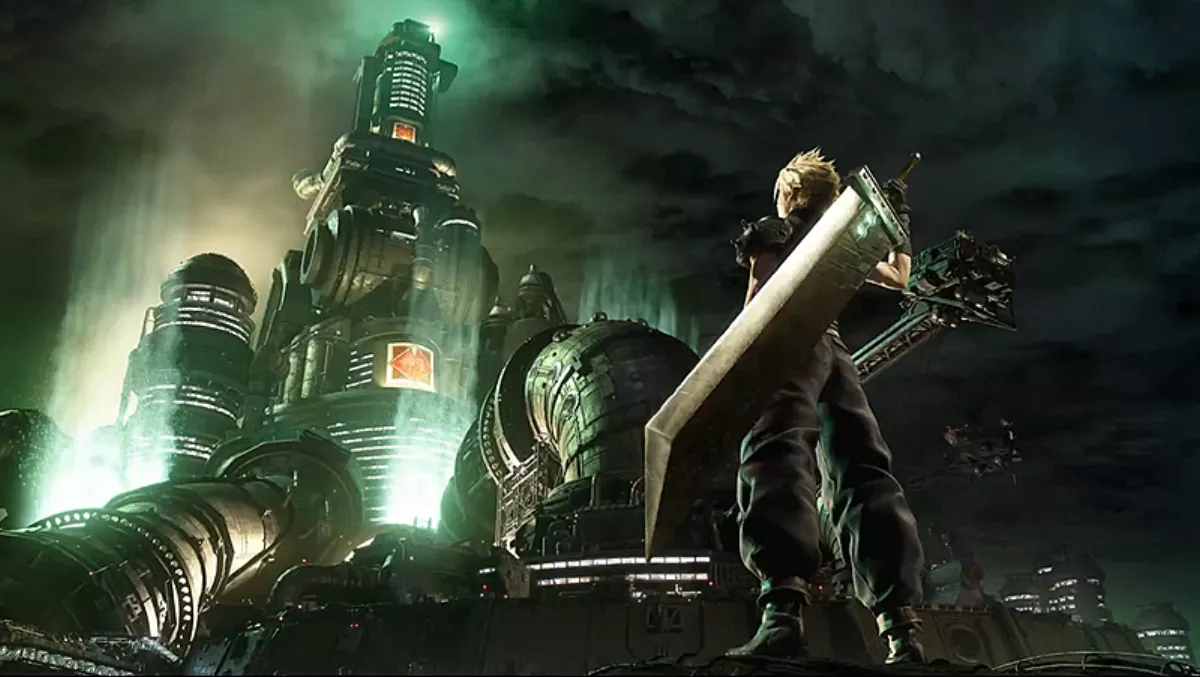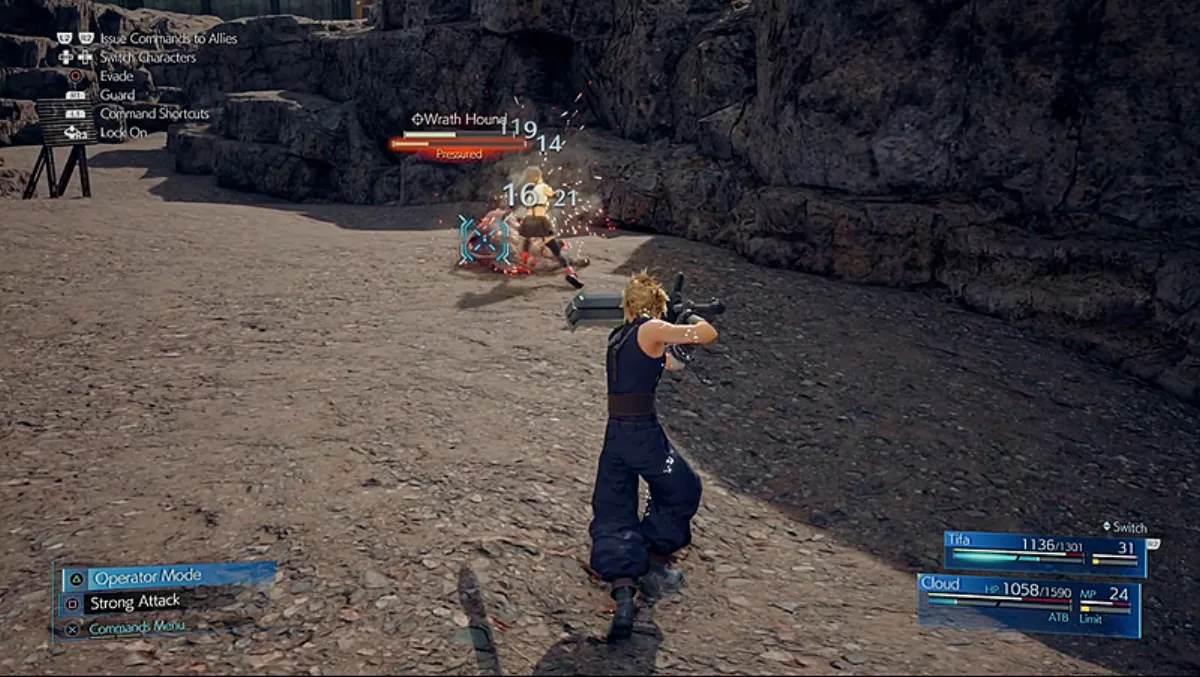Game review: Final Fantasy VII Remake
1997's Final Fantasy VII was a series high-point for Square's very Japanese role-playing game series. It was also the first in the series to make the jump from 2D sprites to 3D graphics, albeit with pre-rendered backgrounds.
The story follows ex-SOLDIER, and now cocky mercenary, Cloud Strife. With eco-freedom-fighters, Avalanche, they set out to take on the Shinra Electric Power Company. Shinra uses the power of the planet, Mako, to generate electricity for the city of Midgar, a disk-like metropolis suspended over the slums on the surface.
The game starts as Cloud teams up with the grumpy Barret, the infatuated Jessie, action-man Biggs and comic foil Wedge on a mission to sabotage one of Shinra's reactors. From here we learn that Cloud has been enlisted by his childhood friend, Tifa, to provide his mercenary skills and help her Avalanche teammates.
The Final Fantasy role-playing game series is renowned for its quirky stories and unique characters. Final Fantasy VII really pulls out the stops to give players an eclectic mix of endearing characters and charming, if odd, storytelling.
Square Enix's Final Fantasy VII Remake successfully takes the essence of the original game and modernises it for a new audience. Fans of the original will recognise the story, if not the actual narrative, which has been expanded in this new version.

There are whole new sequences and side quests not in the original. The FFVII Remake is only the first part of what is intended to be an episodic game release. As such, the game does not extend beyond the City of Midgar. Whilst I've no problem with this and the expanded story works well, as a player very familiar with the original game, some sections did feel a bit unnecessarily padded out.
Combat plays a large part in JRPGs. The combat system for the remake has been completely revised, however, there is the option to use the old combat system if you must. Instead of the turn-based attacks of the original, the combat is in real time, with a pause for selecting items and special abilities.
This revised combat system is very similar to that of Final Fantasy XV and includes the stagger mechanic introduced in Final Fantasy XIII. Unlike more recent Final Fantasy games, I found FFVII's combat very easy to pick up.
In a similar way to the original game, Materia crystals can be inserted into weapons and equipment to provide extra abilities. Material is found lying about the game levels and is worth going out of your way to find. While some is very common, like "lightning" and "cure", there are rare Materia that allows the player to summon creatures to fight alongside the party. Having a party fully equipped with Materia increases the odds, especially against powerful enemies.

Being a JRPG at heart, the Final Fantasy VII Remake features a large variety of enemies, each with their own strengths and weaknesses. Early on players are given "access" Materia that can be used to find out opponents' vulnerabilities.
Whilst Cloud is the main character, for most battles, the player can switch between the teammates in the party. Whilst they will continue to fight on their own, players may need to manually utilise other characters' special abilities.
Unlike Final Fantasy XV, the Final Fantasy VII Remake isn't what I'd call open world. Whilst players are allowed to wander about, for the most part, the game guides players along a semi-linear path, similar to the first 20-odd hours of Final Fantasy XIII. Not that I have a problem with this, but it may be a surprise to players just off Final Fantasy XV.
Whilst the original game was criticised for having too many random encounters just popping up, you can usually see your would-be opponents as you approach them. The new combat is fast and frantic, but with a strategic element in the selection of abilities and summons that stops in from becoming a button-mashing exercise.
The game's graphics are, simply put, breathtaking. The in-engine visuals are not that dissimilar to those in the 2006 CGI-rendered sequel movie, Final Fantasy VII: Advent Children. It's a far cry from the original game's mix of rudimentary 3D characters and static backdrops. This time we have fully realised characters in full 3D environments. Another change is the addition of a full voice cast rather than dialogue balloons. There's still the odd dialogue choice, but for the most part, you can just sit back and listen.
Fans of the original will likely not only be moved by the epic recreation of the original opening sequence, but also the re-orchestrated version of the game's soundtrack. The cues are all there and, whilst the classic end-of-battle tune is omitted, it is still in the game and should bring a smile to your face.
Purists looking for an identical experience to the original, just with updated visuals, may well be disappointed. But they really shouldn't be. The game has been recreated with the expectations of a modern audience, more familiar with the slick style of FFXV, in mind. For veterans of the original, this means a new, more polished, Final Fantasy VII experience.
The episodic nature of this retelling has meant changes to the way characters are introduced to players in order to set up the story for later. The chronological changes are, however, minor.
The Final Fantasy VII Remake is both a homage to the original and an opportunity to revitalise the greatest entry in the Final Fantasy series. The characters, story, game mechanics and general charm of the remake perfectly captures the feel of the original game. This new version of the game proves that Final Fantasy VII is one of the greatest games ever made, and I can't wait for the next part of the remake.
Verdict: 9.5/10


